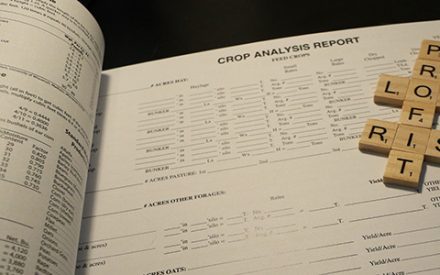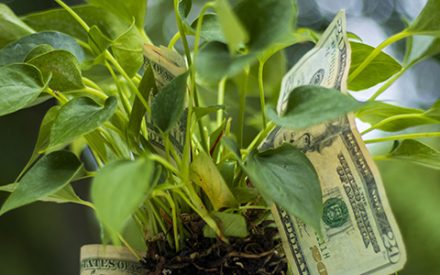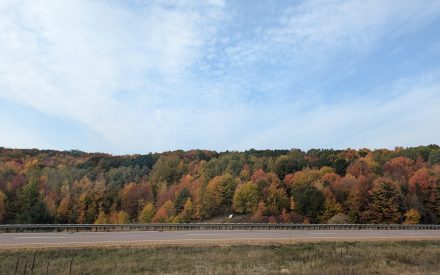Video Summary
In this video, Scott Reuss, regional crops educator, UW–Madison Extension, presents findings from multi-year research trials investigating optimal sulfur application rates for winter wheat in northeastern Wisconsin.
Prompted by conflicting recommendations and observed sulfur deficiencies, the study evaluated sulfur responses across various soil types and yield environments. Using ammonium sulfate at rates of 0, 10, 20, and 30 pounds per acre, the trials revealed variable but often significant yield and economic benefits from sulfur application. Scott shares data from multiple sites and years, highlighting the importance of site-specific management and the potential for improved grain and straw yields with appropriate sulfur rates.
Resources
Transcript
0:05
OK.
0:06
And for anyone who’s ever seen the product, no, we are not doing an endorsement of Swheat Scoop which is a wheat based cat litter product.
0:17
So anyway, moving on, the concept of why look at sulfur research is something that a bunch of producers asked me about and agronomist as we’ve headed through these last 10 years, especially looking at some of our different crops here in Northeastern Wisconsin because of a couple of different reasons.
0:40
1 is that we get conflicting information on how much sulfur we should be applying to our crops.
0:48
We have very little atmospheric deposition anymore and most of the soils in Northeast Wisconsin have relatively low organic matter contents.
0:58
So even though we would get and you know, close to 3 lbs of natural sulfur depth availability per acre per percent of organic matter, we’re generally not getting enough from that route.
1:11
So when you look at A2809 for Wisconsin, it suggests 10 to 25 lbs of per acre of sulfur application for small grains if there is medium or low potential for holding sulfur in the rooting zone.
1:26
OK.
1:26
So well what does that really mean?
1:28
Well in far Northeast Wisconsin where I work, basically all of our soils are in are in between that medium and low potential.
1:36
So it is something that’s definitely there.
1:39
And we’re also seeing again, kind of that what should we really be doing aspect because other states are saying, well, we probably don’t need sulfur.
1:51
So the Michigan State Extension bulletin, so I, I literally am right on the border here.
1:56
They say sulfur should not be necessary, but then for their own wheat trials they add 24 lbs.
2:05
Fertilizing wheat in Minnesota or other neighbor but not real close here, says to apply 25 lbs per acre on sandy soils, 10 to 15 on medium if they have less than 3% organic matter.
2:17
OK, well that would make it look like we should be putting some on for sure.
2:22
But even when we are doing some level of sulfur application, agronomist and extension personnel around this region have been seeing sulfur deficiency symptoms in a lot of our crops, Not necessarily in winter weeks specifically, but in various things.
2:41
And farms are getting, at least we’re telling me they’ve been getting told by their agronomist, you need to be putting on more or you need to be putting on less than what you’re doing.
2:51
So I was getting a lot of questions of, well, what rate really is best?
2:56
So we tried to design some studies to try to get at that question.
3:00
So we started doing this with the 2022 harvest season.
3:03
We had one site in central Marinette County, relatively sandy soil we had.
3:11
It was basically it was a nitrogen application rate plot first and foremost, but then we applied sulfur at 20 lbs per acre via ammonium sulfate to all of the different nitrogen rates.
3:25
And it was a lower yielding field that year because we had very early season, early season, very dry conditions.
3:33
Sorry, I didn’t say that right.
3:35
And at that site across all 5 nitrogen application rates, putting that 20 lbs of sulfur on added just about 8 bushels of grain and a quarter ton of straw.
3:46
So it was a very significant economically positive response to adding that sulfur on.
3:52
And that was, you know, the, when I emailed these results to the producer, their immediate reply was “Wow, sulfur for the win,” you know, because it, you know, it was across all of the different nitrogen rates.
4:04
You can see that on this graph here, the orange bars are this the nitrogen, the same nitrogen rates with sulfur.
4:14
And the blue bars next to them are the the same ones without sulfur, looking at straw on the left and grain on the right.
4:22
And again, I said, as I said before, this was a lower yielding site.
4:26
So we were only, you know, the, the top yields that we got were in that lower 50 bushel per acre range.
4:33
But even at those it was a very significant economic positive to have that sulfur in, in the next.
4:40
So from there we expanded.
4:43
I did throw in a couple of photos here just so you can see this was almost the same nitrogen rate with and without sulfur.
4:50
You can kind of see the density difference.
4:53
Obviously it’s not exceptionally easy to see, but you can at least see that there was a digital difference there.
4:59
And because we’re working with small plots, I didn’t want to be honest and say, OK, these are somewhat mobile nutrients for small plots.
5:06
So yeah, we get an edge effect.
5:08
How do we get around that?
5:09
We harvest the center of the plot so that we make sure we minimize the edge effect and try to have accurate data as best as possible.
5:18
And, no, hand harvesting
5:19
winter wheat is not the funnest activity in the world in early August and late July, but it allows us to get good data.
5:28
So in 2024, the 2023 harvest season, we actually had two different studies.
5:33
We had one very large site because the wheat was the focus of our regional field day event in this area.
5:40
So we had a large set of trials with nitrogen rates, nitrogen timing, fungicide, etcetera.
5:49
So we had a lot of different stuff.
5:50
And then we had four different sulfur rates tested at a standard nitrogen rate.
5:56
Notice we had very good green yields.
5:59
We, as Jerry was talking about beforehand, before we started this, this was a test for the plot combine that Jerry Clark graciously brought over because we were pushing 135 bushels of wheat that we were putting through that plot combine.
6:17
But on the sulfur side of life, we had a negative yield response to adding any sulfur.
6:23
We got close to the same with the zero at the 20 LB or 20 and 30 LB rate.
6:29
But I had never seen a result like this with any type of sulfur work I had ever done.
6:35
It amazed the producer that hosted the site, he said.
6:39
That makes no sense to me, but it was consistent over all four repetitions.
6:44
So we can’t honestly answer that, but we did have a second site and that one had a very different set of results as you can see on these graphs.
6:54
So it was, it wasn’t actually that far away.
6:56
It was only as crow flies was only about 7 miles away was a lower yielding field again.
7:02
But we did see a very positive response to sulfur rate and the 20 LB sulfur per acre was definitely the optimum economic sulfur rate as we had both the highest straw yield on the left and grain yield on the right.
7:17
So again similar to what we had kind of seen in that 2022 harvest site.
7:23
So for the 2024 harvest season, we had three sites, one on each of the three farms that had cooperated earlier in in these studies.
7:33
One of them was a high yielding site, two of them were what I would consider a medium yield sites.
7:39
We used 100 lbs of actual nitrogen per acre in all plots and then we buried the sulfur rates 0, 10, 20 and 30 lbs applied as ammonium sulfate.
7:51
So what did we see for the 2024 harvest here?
7:54
We had a very positive response to sulfur at all three of the sites.
7:59
Now it did vary a little bit as far as where we had the optimum, but when you average or when we averaged the yields across all three sites at the different rates, we maximized straw yield at the 30 LB sulfur rate and we maximized yield at the 30 lb rate.
8:23
But you can see here this this table only shows the Marinette County site where because we had almost the same meal that the 10 and 30 LB rate, the economic optimum sulfur rate was actually the 10 lbs of sulfur.
8:37
But the two Oconto County sites were definitely not that way.
8:42
We had ever increasing yields as we increased the sulfur rate.
8:48
And again, we had a pretty good yield at at Oconto site #1 where we continued to improve both straw and grain yield as we increase the sulfur rate.
8:59
And we did the same thing at the second site even though they were lower yielding.
9:03
So the economic optimum sulfur rates that we had in this study were obviously both the 30 pound rates for these two sites, but we never got to maximum so we couldn’t say for sure.
9:15
Well, should we have put more on, should we have you know gone up to 40 or even 50 lbs and, and the farms were wondering about that.
9:24
So as we looked across the economics, this was the the three sites averaged across, you can see that the 30 lb rate in 2024 was pretty obviously the best economic response.
9:39
And it was very straightforward, especially at the one site where we improved the economic return by over $100 per acre, which is pretty significant when the winter weed is involved.
9:52
So just to give you an idea what we’re doing then for this year, we’ve we’re doing the same concept on all three of those farms.
9:58
But we did go up another 10 lbs for sulfur, which is obviously very high application rates for sulfur compared to what most people are seeing or, or utilizing.
10:10
But we do have 5 sulfur rates across the the standard nitrogen rate.
10:17
But we did have very poor spring growth this year up here with much less tillering than normal.
10:22
So it’s going to be interesting to see what we get for results from the sulfur this year.
10:27
So if you are interested in seeing those numbers, give me an e-mail and I will send you the results after I get them done.
10:36
So with that, I will be quiet for now and stop sharing.
10:41
And if anybody has any questions about this stuff, I can either ask them live while we’re transitioning or in the.
Badger Crop Connect
Timely Crop Updates for Wisconsin
Second and fourth Thursdays 12:30 – 1:30 p.m.
Live via Zoom

 ▶ Fall 2025 Financial Assistance for Producers
▶ Fall 2025 Financial Assistance for Producers ▶ Fall 2025 Ag Policy Update
▶ Fall 2025 Ag Policy Update ▶ Fall 2025 Corn and Soybean Market Outlook
▶ Fall 2025 Corn and Soybean Market Outlook ▶ November 6 Ag Weather Outlook for Wisconsin
▶ November 6 Ag Weather Outlook for Wisconsin


